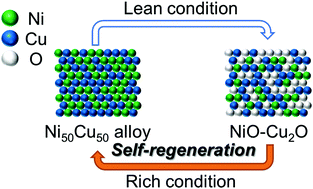Self-regeneration of a Ni–Cu alloy catalyst during a three-way catalytic reaction†
Abstract
Ni–Cu alloy supported on γ-Al2O3 catalysts prepared by high-temperature hydrogen reduction exhibit high catalytic activity and durability for a three-way catalytic reaction under both oxidative and reductive conditions because of their self-regenerating feature. DFT calculations showed that Ni-oxide was reduced to Ni metal by CO in the presence of Cu metal because of the Ni–Cu alloy effect but was not in the absence of Cu metal.



 Please wait while we load your content...
Please wait while we load your content...